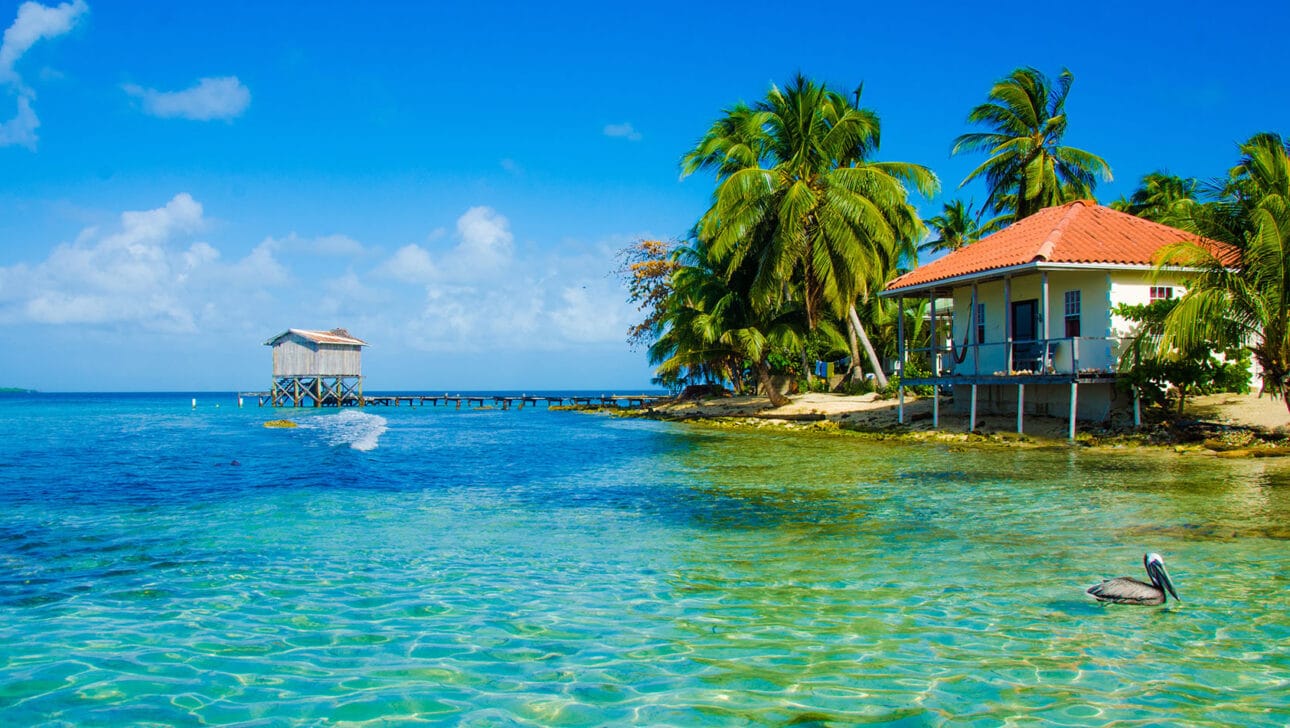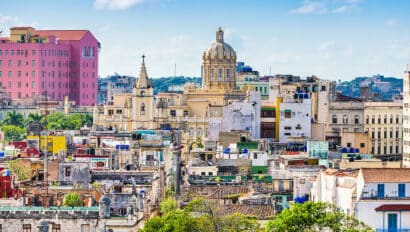UNESCO World Heritage sites are irreplaceable sources of life and inspiration that represent our legacy from the past, what we live with today and what we pass on to future generations. Latin America contains a wealth of these phenomenal sites, both natural and manmade, that make up our world’s most impressive cultural and natural heritage. The aim is to encourage regions to preserve and protect parts of our history while promoting tourism as a sustainable way to take in the magnificence our world has to offer. To help you get the most out of your next trip to Central or South America, we’ve created a roundup of our top 10 UNESCO World Heritage sites you can’t miss!
#1 Machu Picchu, Peru
Perhaps one of the most famous archeological UNESCO sites in the world, Machu Picchu sits high in the Andes Mountain range surrounded by tropical forests and towering peaks. This pearl of the Incan Empire is a popular tourist destination for a reason. It defies belief with amazing architectural achievements, surrounding natural beauty and spiritual significance. Explore the ancient Incan ruins while breathing in the tremendous isolation and preservation of this incredible ancient kingdom deep in the Peruvian mountains.
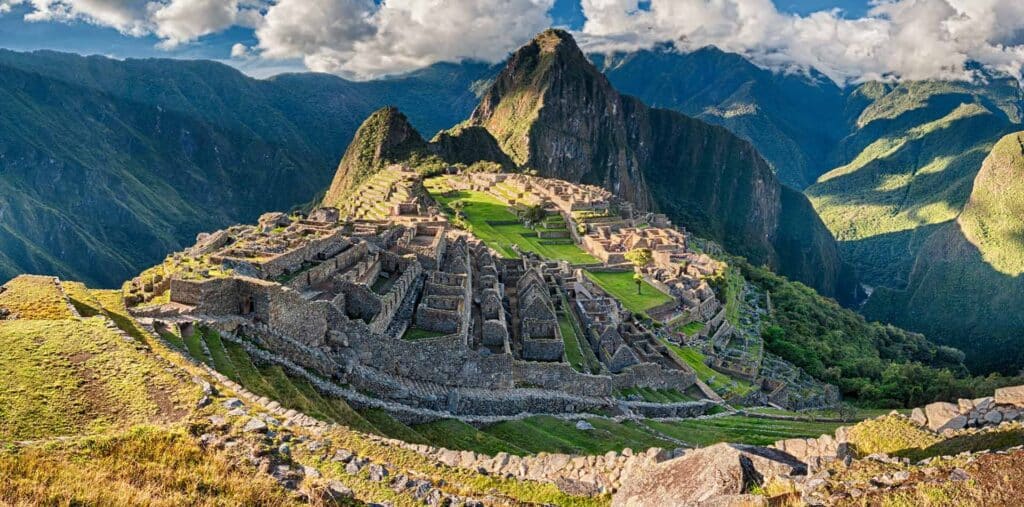
#2 Belize Barrier Reef Reserve System, Belize
Belize’s extensive reef system is considered one of the largest barrier reefs in the northern hemisphere. This impressive coast is home to hundreds of sand cays, mangrove forests, lagoons and several endangered species who call this reef home. During your time here, cruise on a Catamaran, snorkel in the best spots in the reef system, and kayak on turquoise water at Ambergris Caye to fully experience the wonder this UNESCO World Heritage Site has to offer.
#3 Tikal National Park, Guatemala
Tikal National Park is surrounded by a tropical jungle and is home to the tallest pyramid in the Western Hemisphere that was once one of the most important spiritual sites to the ancient Mayan civilization. The ceremonial center and ruins of Xunantunich display the fascinating and mystifying culture of the Mayan civilization that once called this countryside home from 6th century B.C. to the 10th century A.D. This important reserve also contains unspoiled biological and ecological habitats that will amaze along with impressive wildlife like howler monkeys and colorful birds that can be spotted in the treetops.
#4 Rapa Nui National Park (Easter Island), Chile
Easter Island, also known as Isla de Pascua or Rapa Nui by the Spanish and Polynesian is one of the most spectacular and alluring sites on earth. This sacred Polynesian settlement is famous for its enigmatic giant stone figures built centuries ago. These massive “Moai” figures are a mystery to historians and remain one of the only links to the ancient culture and tradition embedded in this gorgeous island. Visit Rapa Nui to revel in the park’s beauty and its stone sculptures that act as a testimony to an isolated cultural evolution.
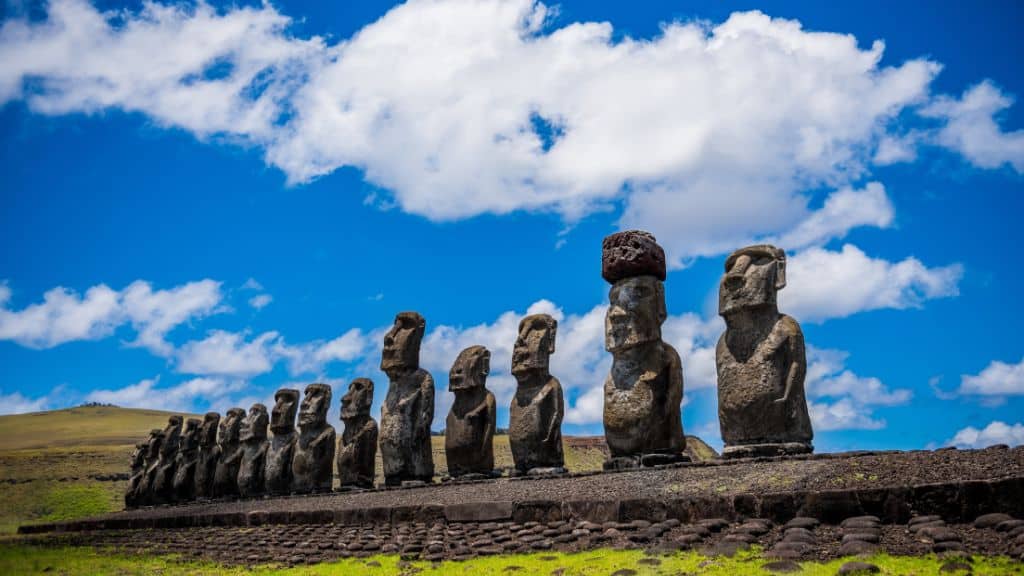
#5 Galápagos Islands, Ecuador
The Galápagos Islands are a volcanic archipelago drifting in isolation in the middle of the Pacific Ocean, brimming with incredible wildlife that once inspired Charles Darwin’s theory of evolution. Walking amongst the wildlife and spotting the islands’ Big Five (giant land tortoises, sea lions, blue-footed boobies, penguins, and marine iguanas) will delight all visitors and provide a real live exhibition of evolution before your very eyes. This island is one of the last unspoiled places on earth where man has respected the boundaries of mother nature and is a treasure in the middle of the Pacific worth visiting.

#6 Los Glaciares National Park (Chile & Argentina)
Located in the picturesque region of Patagonia in Chile & Argentina, Los Glaciares National Park is an area of exceptional beauty with rugged mountains, glacial lakes and a variety of stunning natural sites. Hikers flock here to explore the hundreds of trails while others seek silence and solitude among the remote valleys where views stretch for miles.
Solar Eclipse Sidenote: On December 14, 2020, the day will turn to instant night in one of the few places on land where the total eclipse of the sun will be visible. It is a once-in-a-lifetime sight to see! Classic Journeys is offering a special 2020 Total Solar Eclipse tour to view this incredible moment while perched atop a Chilean mountainside.

#7 Town of Cartagena, Columbia
Cartagena is the perfect Caribbean city overflowing with history and enchanting beauty thanks to some of the world’s best-preserved colonial architecture lining the streets. This colorful town is wonderfully walkable and chock-full of cobbled streets draped in bougainvillea where current residents live in close quarters with traditions of the past that linger in this port city. Dominating this UNESCO World Heritage Site is the nearby San Felipe Castle, boasting over 500 years of defending the ancient city from pirates and foreign invasions
#8 La Amistad National Park, Panama
This massive national park, on the border between Panama and Costa Rica, contains lush tropical rainforests and unique fauna and flora interbred between the biospheres of North and South America. Arguably, one of the best ways to see this biosphere reserve is to walk El Retoño trail and learn about one of the highest and wildest non-volcanic mountain ranges in Central America. As you explore the lush ecosystem of the park, look up and search for the incredible variety of birds ranging from Quetzals to Tapaculos, and Flycatchers.
#9 Old Havana and its Fortification System, Cuba
Old Havana (La Habana Vieja) describes the most central and original portion of the Havana, Cuba. This 500-year-old UNESCO World Heritage Site is the original heart of Havana, built by the Spanish, burned to the ground by pirates, and is still considered a fine district of baroque and neoclassic buildings with great architectural character you can’t find elsewhere. Explore the Plaza de Armas, Castillo del Morro, and Museum of the Revolution to learn more about the rich history and culture of this precious island.
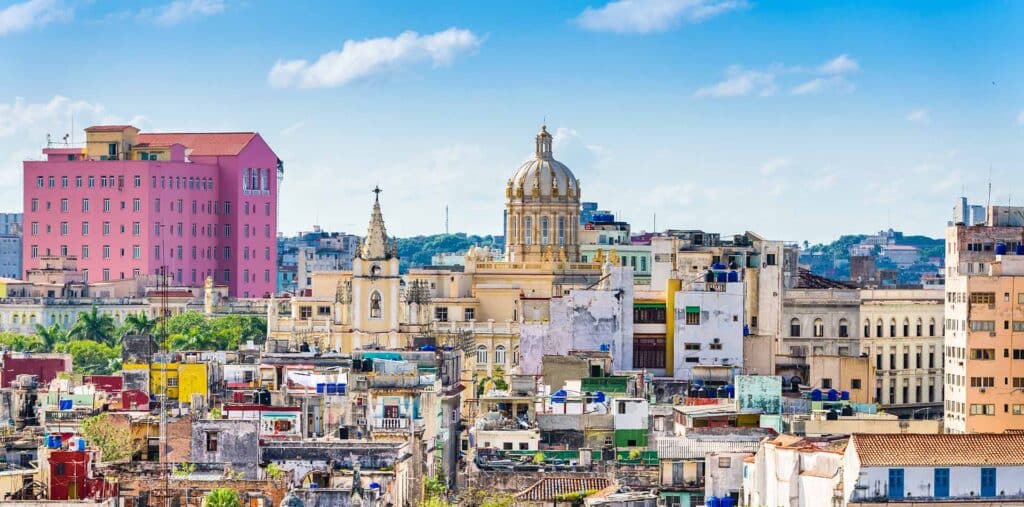
#10 Viñales Valley, Cuba
With its fertile soil, favorable climate, and wide valleys, this area in western Cuba is known for its tobacco cultivation and high rising cliffs that surround the valley. Parque Nacional Viñales is located in the Pinar del Rio province and the dramatic cliffs surrounding the valley hold numerous caves full of dripstone and ancient rock art from past inhabitants. Enjoy the abundance of greenery in this province and learn of the traditional methods of agriculture that have survived here unchanged for several centuries.
If you’re interested in visiting one or more of these iconic locations, check out the different trips offered by Classic Journeys to Central & South America to explore some of the worlds most culturally and naturally stunning UNESCO World Heritage Sites.

